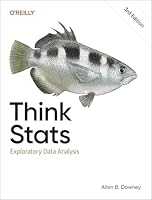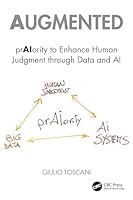
Applied Statistics with R: A Practical Guide for the Life Sciences
- Length: 336 pages
- Edition: 1
- Language: English
- Publisher: Oxford University Press
- Publication Date: 2021-08-30
- ISBN-10: 0198869339
- ISBN-13: 9780198869337
- Sales Rank: #6893801 (See Top 100 Books)
https://audiopronews.com/headlines/7rb09csu2o The statistical analyses that students of the life-sciences are being expected to perform are becoming increasingly advanced. Whether at the undergraduate, graduate, or post-graduate level, this book provides the tools needed to properly analyze your data in an efficient, accessible, plainspoken, frank, and occasionally humorous manner, ensuring that readers come away with the knowledge of which analyses they should use and when they should use them.
go here The book uses the statistical language R, which is the choice of ecologists worldwide and is rapidly becoming the ‘go-to’ stats program throughout the life-sciences. Furthermore, by using a single, real-world dataset throughout the book, readers are encouraged to become deeply familiar with an imperfect but realistic set of data. Indeed, early chapters are specifically designed to teach basic data manipulation skills and build good habits in preparation for learning more advanced analyses. This approach also demonstrates the importance of viewing data through different lenses, facilitating an easy and natural progression from linear and generalized linear models through to mixed effects versions of those same analyses. Readers will also learn advanced plotting and data-wrangling techniques, and gain an introduction to writing their own functions.
get link Applied Statistics with R is suitable for senior undergraduate and graduate students, professional researchers, and practitioners throughout the life-sciences, whether in the fields of ecology, evolution, environmental studies, or computational biology.
https://www.annarosamattei.com/?p=6joelt0 Cover Applied Statistics with R: A Practical Guide for the Life Sciences Copyright Dedication Preface Welcome! Goals for the book Basic layout of the book A little background about R A little about how R works Why learn R? Acknowledgments Contents 1: Introduction to R 1 Introduction to R 1.1 Overview 1.2 Getting Started 1.2.1 Obtaining R 1.2.2 Installing and loading packages 1.3 Working From The Script Window 1.4 Creating Well-documented And Annotated Code 1. Writing for yourself 2. Writing for collaborators 3. Writing for folks in the future who might want to see your code 1. Always start with your raw data 2. Annotate, annotate, annotate 3. Organize your script file into logical sections 4. Give your objects meaningful and unique names 1.5 Before We Get Started 1.6 Creating Objects 1.7 Functions 1.8 What Your Data Should Look Like Before Loading Into R 1.9 Understanding Various Types Of Objects In R 1.9.1 Vector 1.9.2 Matrix 1.9.3 Data frame 1.9.4 Lists 1.10 A Litany Of Useful Functions 1.10.1 Functions for examining data frames or other objects 1.10.2 General functions for creating or manipulating objects 1.10.3 Mathematic functions 1.11 Assignment! 2: Before You Begin (aka Thoughts on Proper Data Analysis) 2 Before You Begin (aka Thoughts on Proper Data Analysis) 2.1 Overview 2.2 Basic Principles Of Experimental Design 2.3 Blocked Experimental Designs 2.4 You Can (and Should) Plan Your Analyses Before You Have The Data! 2.5 Best Practices For Data Analysis 2.6 How To Decide Between Competing Analyses 2.7 Data Are Data Are Data 3: Exploratory Data Analysis and Data Summarization 3 Exploratory Data Analysis and Data Summarization 3.1 The Resource-by-predation Dataset 3.2 Reading In The Data File 3.2.1 Reading the file using read.csv() 3.3 Data Exploration And Error Checking 3.3.1 Data structure 3.3.2 Data exploration and visualization 3.3.3 Further data exploration and identifying mistakes 3.3.4 Fixing mistakes in the data 3.3.5 A note about indexing 3.4 Summarizing And Manipulating Data 3.4.1 Reordering your data 3.4.2 Calculating Means and Standard Errors 3.5 Assignment! 4: Introduction to Plotting 4 Introduction to Plotting 4.1 Principles Of Effective Figure Making 4.1.1 Defining colors 4.1.1.1 Numerical colors 4.1.1.2 Named colors 4.1.1.3 RGB colors 4.1.1.4 Hex colors 4.2 Data Exploration Using Ggplot2 4.2.1 Boxplots 4.2.2 Faceting 4.2.3 Violin plots 4.2.4 Histograms and density plots 4.2.5 Scatterplots 4.3 Plotting Your Data 4.3.1 Making a barplot in base graphics 4.3.2 Making a barplot in ggplot2 4.4 Assignment! 5: Basic Statistical Analyses 5 Basic Statistical Analyses 5.1 Determining What Type Of Analysis To Do 5.2 Avoiding Pseudoreplication 5.3 Testing For Normality In Your Data 5.3.1 Looking at the data 5.3.2 Normality tests 5.3.3 Understanding error distributions 5.4 Non-parametric Tests 5.4.1 The Mann-Whitney U test and the Kruskal-Wallis test 5.4.2 Student’s t-test 5.5 Introducing Linear Models 5.6 One-way Analysis Of Variance—anova 5.6.1 Diagnostic plots 5.6.2 A note of caution 5.7 Multiple Comparisons 5.8 Assignment! 6: More Linear Models! 6 More Linear Models! 6.1 getting started 6.2 multi-way analysis of variance—anova 6.2.1 Interpreting an output with interactions 6.2.2 Posthoc comparisons when you have interactions? 6.2.3 Posthoc comparisons of all six treatments at once 6.3 linear regression 6.3.1 Interpreting the regression 6.3.2 Plotting the regression 6.4 analysis of covariance (ancova) 6.4.1 Interpreting an ANCOVA 6.4.2 Post-hoc anlyses of an ANCOVA 6.4.3 Interpreting the summary output for an ANCOVA 6.5 the predict() function 6.6 plotting with ggplot() instead of qplot() 6.7 assignment! 7: Generalized Linear Models (GLM) 7 Generalized Linear Models (GLM) 7.1 Understanding Non-normal Data 7.2 Glms 7.3 Understanding And Interpreting The Glm 7.3.1 Comparing the diagnostic plots and making a decision 7.4 Calculating Statistical Significance With Glms 7.5 Coding The Data As A Binomial Glm 7.6 Mixing Glms And Ancovas Together 7.7 Using The Predict() Function With A Glm 7.8 Making A Much Easier Glm/ancova Plot Using Ggplot2 7.9 Assignment! 8: Mixed Effects Models 8 Mixed Effects Models 8.1 Understanding Mixed Effects Models 8.1.1 Coding a mixed effects model 8.1.2 Interpreting the output 8.1.3 Diagnostic plots 8.1.4 GLMM’s (and troubleshooting when they don’t run) 8.1.5 More about model selection 8.1.6 Estimating marginal means with mixed models 8.2 Assignment! 9: Advanced Data Wrangling and Plotting 9 Advanced Data Wrangling and Plotting 9.1 The “tidyverse” 9.2 Basic Data Wrangling 9.2.1 Group and summarize data 9.2.2 Use mutate() to calculate new variables 9.2.3 Use select() to include or exclude certain variables 9.2.4 Use filter() to remove certain values 9.2.5 Join two datasets together 9.3 Advanced Data Wrangling: Spreading And Gathering Your Data 9.4 Even More Advanced Data Wrangling! Using The Do() Function 9.5 Making Better Figures With Ggplot2 9.5.1 Defining colors 9.6 Basics Of Ggplot2 9.6.1 Getting started with qplot() 9.7 Customizing Your Figure 9.7.1 Changing colors 9.7.2 Changing the axes limits 9.7.3 A little more about themes 9.7.4 Advanced faceting 9.7.5 Changing your facet labels 9.7.6 Using ggplot() vs qplot() 9.8 Combining Data Wrangling With Plotting With Ggplot2 9.8.1 Let’s make a professional looking bargraph! 9.8.2 Now let’s really do something cool: combining gathered data and faceting 9.9 Assignment! 10: Writing Loops and Functions in R 10 Writing Loops and Functions in R 10.1 For Loops 10.2 Understanding Functions 10.3 Writing Functions 10.4 How A Function Works 10.4.1 A realistic and useful function: Let’s calculate the standard error 10.5 Writing More Complex Functions: An Example Using Simulations 10.5.1 Starting simple 10.5.2 Making a very basic function 10.5.3 Building in arguments 10.6 Assignment! 11: Final Thoughts 11 Final Thoughts 11.1 Understanding Your Data Is The Most Important Precursor To Analyzing It 11.2 Knowing How To Get Help Is Essential 11.3 Your Data Analysis Should Be Clear From The Outset And You Should Avoid Questionable Techniques 11.4 Presenting Your Data In Well-constructed Figures Is Key Index
Order Clonazepam 1Mg 1. Disable the enter site AdBlock plugin. Otherwise, you may not get any links.
source url 2. Solve the CAPTCHA.
https://www.anonpr.net/ukdyz1gfu2 3. Click download link.
https://musicboxcle.com/2025/04/bqrddbtlwgk 4. Lead to download server to download.





